Instruction
Where Tour pros distribute their weight at address
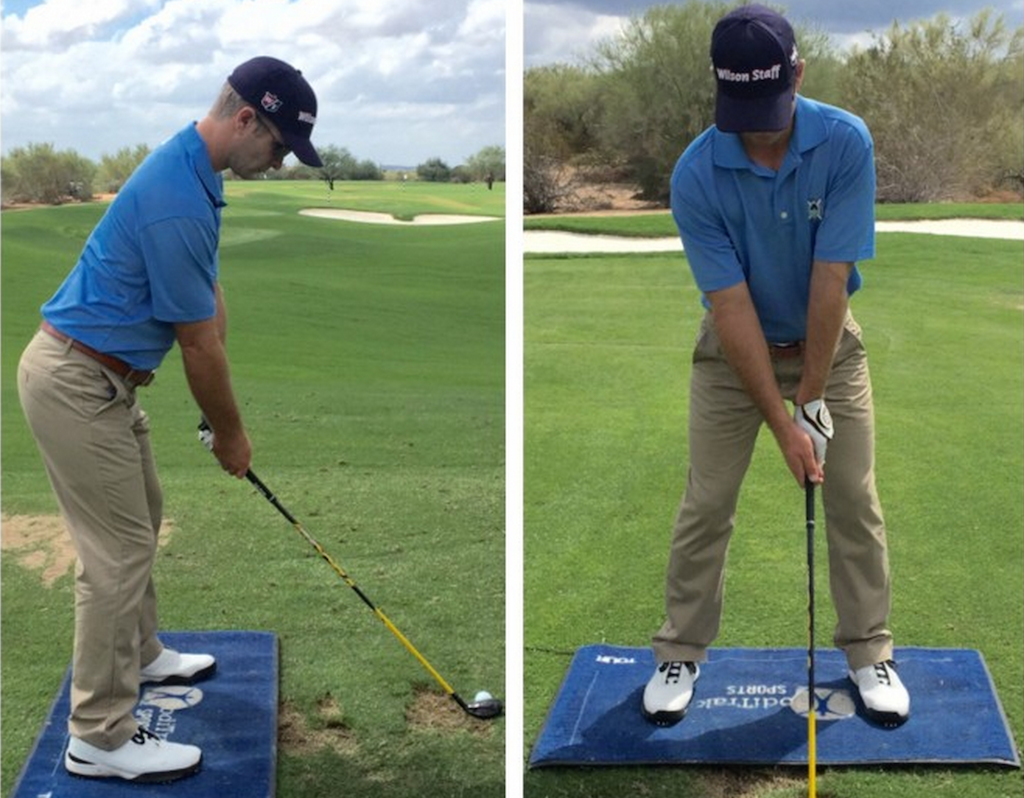
Weight measurement devices, like BodiTrak, can truly simplify the learning environment when used properly. They help quantify a student’s feelings, and communicate truth to the student when their feelings don’t match reality.
BodiTrak data has been able to confirm that many elite players in the game start their golf swings with more pressure on their target foot. This encompasses our longer golf clubs too, including the driver. Below I’ll discuss why they do, and why you should too.
The concept is simple: counter motion. Think of cracking a whip. A whip makes a more explosive cracking noise when the tip and handle are moving faster in opposite directions.
How does this concept apply to golf? A golfer will create more lateral speed (the first link in the kinematic chain), and more explosive energy by starting with more pressure on the target foot. By applying more pressure to the target foot at the address position, a golfer is giving his body the ability to build more momentum when beginning the transfer of pressure toward the trail foot. That momentum is compounded by the quick change of direction from the trail foot, back to target foot, not unlike the crack of a whip.
Not convinced? If you start with more pressure on the trail foot, your body simply does not have the same amount of time to create equal amounts of momentum compared to starting with more pressure on the target foot. The counter motion will be slower, the cracking of the whip will be quieter and the kinematic sequence will be diminished.
I know many of you may be questioning this information, especially when considering the driver. Haven’t we all been encouraged to start with more pressure on the trail foot for our longer clubs? Data shows us that we want to achieve more pressure on our trail foot during the backswing sequence to maximize the concept of counter motion… not the address position. As the golf club gets longer, more pressure should reach the trail foot during the transition from backswing to downswing.
Here is what many of the elite players are doing on tour today.
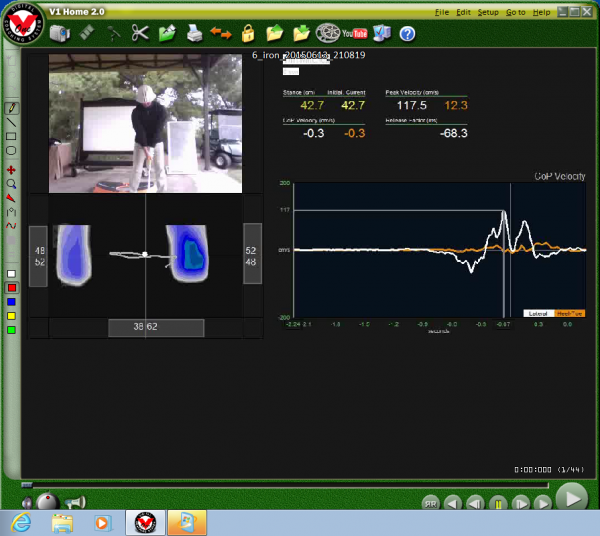
This golfer is using a 6-iron. At address, more than 60 percent of his pressure is on the target foot.
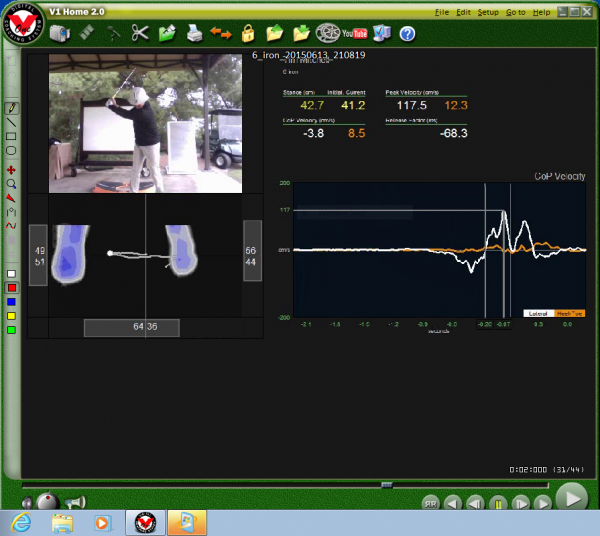
This golfer’s pressure is just under 65 percent on the trail foot during the body’s transition from trail to target foot.
If you’re curious to learn more, a good friend, Terry Hashimoto, has a great deal of data confirming the information shared above. Check out the video below to see pressure mapping of PGA Tour Winners Russell Henley, Chris Kirk and Harris English, amongst others, and see how many of these elite golfers have characteristics of this foot work pattern.
By starting with more pressure on the lead foot with all your clubs, you are giving your body an enhanced ability to improve your foot work, which can help you create more of a whip-like effect for more speed, as well as improve your ability to be at a more efficient position at impact.
If you’re not doing this, give it a go. I think you’ll like the results.
- LIKE131
- LEGIT14
- WOW11
- LOL6
- IDHT4
- FLOP4
- OB3
- SHANK13
Instruction
The Wedge Guy: The easiest-to-learn golf basic

My golf learning began with this simple fact – if you don’t have a fundamentally sound hold on the golf club, it is practically impossible for your body to execute a fundamentally sound golf swing. I’m still a big believer that the golf swing is much easier to execute if you begin with the proper hold on the club.
As you might imagine, I come into contact with hundreds of golfers of all skill levels. And it is very rare to see a good player with a bad hold on the golf club. There are some exceptions, for sure, but they are very few and very far between, and they typically have beat so many balls with their poor grip that they’ve found a way to work around it.
The reality of biophysics is that the body moves only in certain ways – and the particulars of the way you hold the golf club can totally prevent a sound swing motion that allows the club to release properly through the impact zone. The wonderful thing is that anyone can learn how to put a fundamentally sound hold on the golf club, and you can practice it anywhere your hands are not otherwise engaged, like watching TV or just sitting and relaxing.
Whether you prefer an overlap, interlock or full-finger (not baseball!) grip on the club, the same fundamentals apply. Here are the major grip faults I see most often, in the order of the frequency:
Mis-aligned hands
By this I mean that the palms of the two hands are not parallel to each other. Too many golfers have a weak left hand and strong right, or vice versa. The easiest way to learn how to hold the club with your palms aligned properly is to grip a plain wooden ruler or yardstick. It forces the hands to align properly and shows you how that feels. If you grip and re-grip a yardstick several times, then grip a club, you’ll see that the learning curve is almost immediate.
The position of the grip in the upper/left hand
I also observe many golfers who have the butt of the grip too far into the heel pad of the upper hand (the left hand for right-handed players). It’s amazing how much easier it is to release the club through the ball if even 1/4-1/2″ of the butt is beyond the left heel pad. Try this yourself to see what I mean. Swing the club freely with just your left hand and notice the difference in its release from when you hold it at the end of the grip, versus gripping down even a half inch.
To help you really understand how this works, go to the range and hit shots with your five-iron gripped down a full inch to make the club the same length as your seven-iron. You will probably see an amazing shot shape difference, and likely not see as much distance loss as you would expect.
Too much lower (right) hand on the club
It seems like almost all golfers of 8-10 handicap or higher have the club too far into the palm of the lower hand, because that feels “good” if you are trying to control the path of the clubhead to the ball. But the golf swing is not an effort to hit at the ball – it is a swing of the club. The proper hold on the club has the grip underneath the pad at the base of the fingers. This will likely feel “weak” to you — like you cannot control the club like that. EXACTLY. You should not be trying to control the club with your lower/master hand.
Gripping too tightly
Nearly all golfers hold the club too tightly, which tenses up the forearms and prevents a proper release of the club through impact. In order for the club to move back and through properly, you must feel that the club is controlled by the last three fingers of the upper hand, and the middle two fingers of the lower hand. If you engage your thumbs and forefingers in “holding” the club, the result will almost always be a grip that is too tight. Try this for yourself. Hold the club in your upper hand only, and squeeze firmly with just the last three fingers, with the forefinger and thumb off the club entirely. You have good control, but your forearms are not tense. Then begin to squeeze down with your thumb and forefinger and observe the tensing of the entire forearm. This is the way we are made, so the key to preventing tenseness in the arms is to hold the club very lightly with the “pinchers” — the thumbs and forefingers.
So, those are what I believe are the four fundamentals of a good grip. Anyone can learn them in their home or office very quickly. There is no easier way to improve your ball striking consistency and add distance than giving more attention to the way you hold the golf club.
More from the Wedge Guy
- The Wedge Guy: Golf mastery begins with your wedge game
- The Wedge Guy: Why golf is 20 times harder than brain surgery
- The Wedge Guy: Musings on the golf ball rollback
- LIKE85
- LEGIT13
- WOW6
- LOL1
- IDHT0
- FLOP4
- OB1
- SHANK8
Instruction
Clement: Stop ripping off your swing with this drill!

Not the dreaded headcover under the armpit drill! As if your body is defective and can’t function by itself! Have you seen how incredible the human machine is with all the incredible feats of agility all kinds of athletes are accomplishing? You think your body is so defective (the good Lord is laughing his head off at you) that it needs a headcover tucked under the armpit so you can swing like T-Rex?
- LIKE0
- LEGIT2
- WOW2
- LOL0
- IDHT0
- FLOP0
- OB0
- SHANK2
Instruction
How a towel can fix your golf swing

This is a classic drill that has been used for decades. However, the world of marketed training aids has grown so much during that time that this simple practice has been virtually forgotten. Because why teach people how to play golf using everyday items when you can create and sell a product that reinforces the same thing? Nevertheless, I am here to give you helpful advice without running to the nearest Edwin Watts or adding something to your Amazon cart.
For the “scoring clubs,” having a solid connection between the arms and body during the swing, especially through impact, is paramount to creating long-lasting consistency. And keeping that connection throughout the swing helps rotate the shoulders more to generate more power to help you hit it farther. So, how does this drill work, and what will your game benefit from it? Well, let’s get into it.
Setup
You can use this for basic chip shots up to complete swings. I use this with every club in my bag, up to a 9 or 8-iron. It’s natural to create incrementally more separation between the arms and body as you progress up the set. So doing this with a high iron or a wood is not recommended.
While you set up to hit a ball, simply tuck the towel underneath both armpits. The length of the towel will determine how tight it will be across your chest but don’t make it so loose that it gets in the way of your vision. After both sides are tucked, make some focused swings, keeping both arms firmly connected to the body during the backswing and follow through. (Note: It’s normal to lose connection on your lead arm during your finishing pose.) When you’re ready, put a ball in the way of those swings and get to work.

Get a Better Shoulder Turn
Many of us struggle to have proper shoulder rotation in our golf swing, especially during long layoffs. Making a swing that is all arms and no shoulders is a surefire way to have less control with wedges and less distance with full swings. Notice how I can get in a similar-looking position in both 60° wedge photos. However, one is weak and uncontrollable, while the other is strong and connected. One allows me to use my larger muscles to create my swing, and one doesn’t. The follow-through is another critical point where having a good connection, as well as solid shoulder rotation, is a must. This drill is great for those who tend to have a “chicken wing” form in their lead arm, which happens when it becomes separated from the body through impact.
In full swings, getting your shoulders to rotate in your golf swing is a great way to reinforce proper weight distribution. If your swing is all arms, it’s much harder to get your weight to naturally shift to the inside part of your trail foot in the backswing. Sure, you could make the mistake of “sliding” to get weight on your back foot, but that doesn’t fix the issue. You must turn into your trial leg to generate power. Additionally, look at the difference in separation between my hands and my head in the 8-iron examples. The green picture has more separation and has my hands lower. This will help me lessen my angle of attack and make it easier to hit the inside part of the golf ball, rather than the over-the-top move that the other picture produces.


Stay Better Connected in the Backswing
When you don’t keep everything in your upper body working as one, getting to a good spot at the top of your swing is very hard to do. It would take impeccable timing along with great hand-eye coordination to hit quality shots with any sort of regularity if the arms are working separately from the body.
Notice in the red pictures of both my 60-degree wedge and 8-iron how high my hands are and the fact you can clearly see my shoulder through the gap in my arms. That has happened because the right arm, just above my elbow, has become totally disconnected from my body. That separation causes me to lift my hands as well as lose some of the extension in my left arm. This has been corrected in the green pictures by using this drill to reinforce that connection. It will also make you focus on keeping the lead arm close to your body as well. Because the moment either one loses that relationship, the towel falls.


Conclusion
I have been diligent this year in finding a few drills that target some of the issues that plague my golf game; either by simply forgetting fundamental things or by coming to terms with the faults that have bitten me my whole career. I have found that having a few drills to fall back on to reinforce certain feelings helps me find my game a little easier, and the “towel drill” is most definitely one of them.
- LIKE12
- LEGIT2
- WOW2
- LOL0
- IDHT0
- FLOP2
- OB0
- SHANK8
-

 19th Hole1 week ago
19th Hole1 week agoDave Portnoy places monstrous outright bet for the 2024 Masters
-

 19th Hole2 weeks ago
19th Hole2 weeks agoThings got heated at the Houston Open between Tony Finau and Alejandro Tosti. Here’s why
-

 19th Hole1 week ago
19th Hole1 week agoTiger Woods arrives at 2024 Masters equipped with a putter that may surprise you
-

 19th Hole2 weeks ago
19th Hole2 weeks agoReport: Tiger Woods has ‘eliminated sex’ in preparation for the 2024 Masters
-

 19th Hole3 days ago
19th Hole3 days agoTwo star names reportedly blanked Jon Rahm all week at the Masters
-

 19th Hole3 days ago
19th Hole3 days agoNeal Shipley presser ends in awkward fashion after reporter claims Tiger handed him note on 8th fairway
-

 19th Hole2 weeks ago
19th Hole2 weeks agoAddiction, spinal fusion, and scam artists – Everything Anthony Kim revealed in candid interview with David Feherty
-

 19th Hole2 weeks ago
19th Hole2 weeks agoAnthony Kim says doctors told him that he ‘may not have much time left’ ahead of LIV return


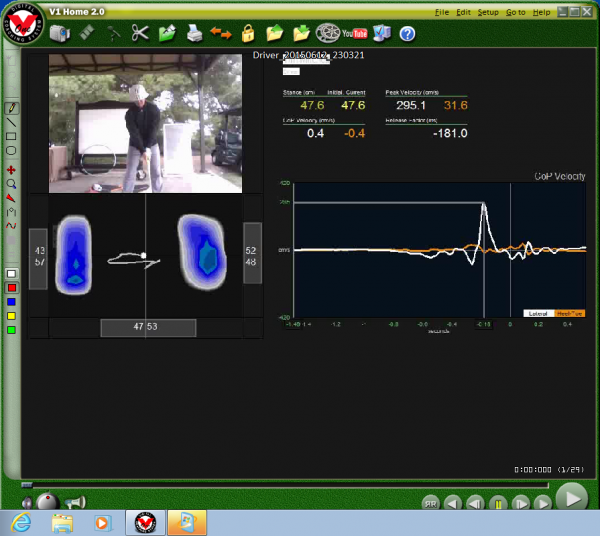
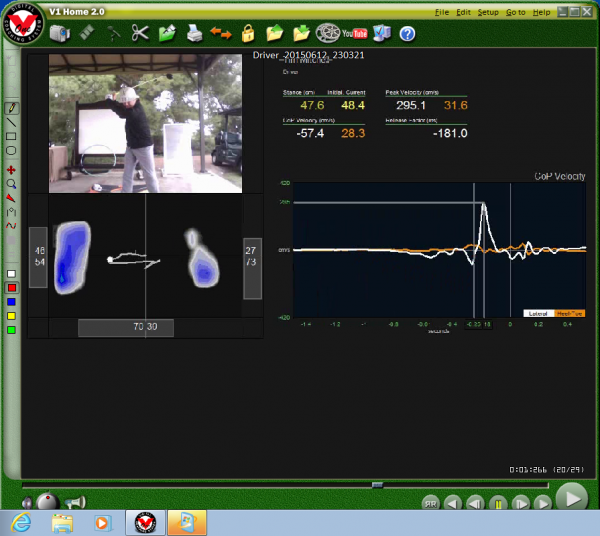
















Michael
Sep 17, 2023 at 9:46 pm
Has this concept changed since dual force plates have been introduced?
Dave
Oct 11, 2015 at 10:04 am
Long winded comment ahead- So, I understand the observation / concept / measurement / theory aspect of this, what I don’t understand is how you apply this? I’m no better than an average golfer, with good balance and body awareness (former collegiate athlete). I’m guessing the answer is to use it as a diagnostic tool and get the help of a qualified teacher to help you sort through it? Or trial and error and see what works? I tried this last year after reading a bit in this concept, and I struggled quite a bit. I see how if you take a typical, repeatable swing of a good golfer or tour player, these types of measurements are probably a great way to correct minor swing issues. They are probably doing 1 or 2 things wrong that can be corrected. Seems there are so are many things that could change where the center of pressure for MY swing lies at address: all of the alignments (feet, knees, hips, shoulders, heels/toes) could have 3 dimensions, then things like spine bend and tilt, starting position of your hands / to the club / to the ball, and many others could cause your body to shift weight. It gets more complicated in the backswing (much of which can be influenced by changes at starting position): takeaway direction/speed, whether you push or drag the handle, early/late hinge, length of swing, upright vs around swing plane, how you load and use the ground, etc. I think all of these things could impact your center of pressure, right? I know I overthink many things in athletics, but a measurement does little to help a player like me without an associated method.
marcel
Oct 20, 2015 at 6:50 pm
great write up Dave!
my personal experience with sport and I am quite enthusiast. Tennis – i played for years with no guidance and after like 10 years i had so many bad habits on timing, footwork etc. I took me 18 months to repair at least something back… and prevent tennis elbow etc.
in golf i took different route – i took lessons right after 1st bucket of balls. game improved understanding improved, biomechanics made more sense… i stuck with older coach AAA+ former NSW open champ – great teacher – no fancy gadgets. I noticed i play really confident when having lessons. I have gotten to 15 handicap – 300+ yrds straight drives, i4 200 yards and I am only 5’7″. i do a lots of gym and crossFit style training tho.
golf is a precision game and i feel the coaching is the only way how to keep getting better… Jason Day has his golf coach on the bag – mental support and swing correction support – very smart choice.
Alex
Oct 10, 2015 at 12:46 am
I notice the pressure is high in transition. What exactly is defined as transition? The exact moment the club changes direction?
Tim Mitchell
Oct 12, 2015 at 8:50 pm
Alex…the transition occurs when your pressure changes direction from your trail foot to your lead foot. Almost all good players start charging their pressure from trail foot to lead foot significantly earlier than when the golf club completes the backswing motion.
other paul
Oct 9, 2015 at 11:22 pm
I wonder if you could redo this with no club in the hands. The club weighs enough to throw off the weighting a bit. It might be 50-50 with no club. Who knows…? If you stand neutral in an address position then the only thing moving weight to your front foot is the fact that hands and club are ahead (towards front foot) so that could be the small percentage forward that we see.
Frid
Oct 10, 2015 at 11:01 am
5% of 180 pounds is 9 pounds. I disagree that club position will affect percentages more than minimally.
Chris Nickel
Oct 9, 2015 at 2:10 pm
Really interesting food for thought here…One question I have is how can you do this and keep your spine tilted away from the target both at address and at impact? Or is that not necessary? Thanks!
Alex
Oct 10, 2015 at 12:44 am
So – think of it this way…lean over to the right or trail foot, then push your lead foot into the ground harder.
You can put weight (pressure) onto a foot without having your body aligned over it.
We need to understand that I think…we tend to think weight = head aligned over it but in reality that’s not the case.
Tim Mitchell
Oct 12, 2015 at 8:51 pm
Well said Alex!